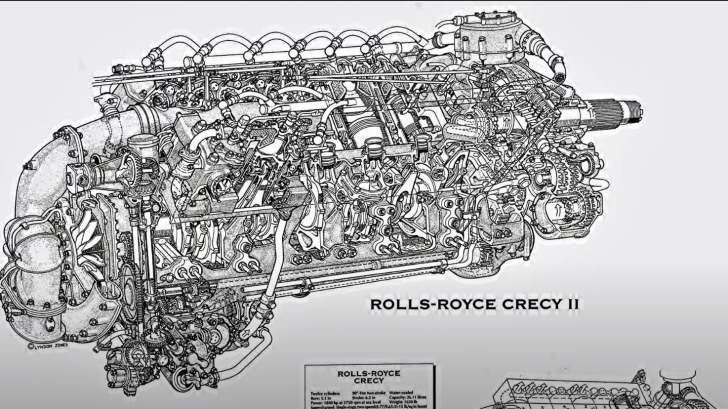This experimental two-stroke, sleeve-valved V12 engine was so powerful it would have bridged the gap between the piston and jet engine. Though it never had the chance to prove itself, it at least deserves to be remembered as the technological masterpiece it truly was. Here are ten things you should know about the Rolls Royce Crecy:
-
The “brainchild” of Harry Ricardo
Ricardo was a brilliant engineer and was instrumental in developing the sleeve valve engine design. His seminal research paper about its advantages led to several aircraft engines being developed, such as the Crecy.
-
Named after an event
Rolls-Royce chose the names of their two-stroke aero engines from famous battles. The Crecy got its name from “The Battle of Crecy,” which occurred on August 26, 1346, between the French and British armies. It resulted in an English victory, with at least 4,000 Frenchmen killed.
-
Intended for a high-speed “sprint” fighter
Ricardo’s first batch of research regarding a “sprint” engine outlined its capabilities. The special-purpose aero engine would have had a very high performance in short flights, without regard for fuel or oil consumption. He would later redesign his experimental E44 into a spark ignition running as a petrol engine which would later be known as the Crecy.
-
Had single-sleeve valves
Each of its cylinders had a single-sleeve valve and petrol injection directly into the combustion chamber. These valves were also open-ended, with similar construction to rotary sleeve valve designs.
-
Supercharged by necessity
Crecy engines were supercharged because two-stroke engines couldn’t operate unless the inlet manifold pressure exceeded the exhaust pressure to drive out the exhaust products and introduce fresh air into the cylinder. This meant that the blower was its only means of filling and emptying its cylinders.
-
One test engine had 5,000bhp
Ricardo’s E65 test engine achieved the 5,000 mark. This was particularly impressive because the engine only displaced 26 liters. It also featured a 5.1in bore, a 6.5in stroke, a compression ratio of 7:1, 12in rotor diameter on the supercharger, and 1,900 lbs of dry weight.
-
Activated air raid sirens during tests
Since the Crecy’s exhaust ports opened almost instantly at 91 degrees after the pressure in the cylinder was still high, you would have heard 36,000 pulses per minute at 3,000 rpm – twice as many as a four-stroke V12. This combination produced an exhaust sound like no other. It was reported that air raid sirens 15 miles away went off when it first ran.
-
Program was canned in 1946
The introduction of jet engines ultimately made the program obsolete. As a result, the project was canceled, with only six complete examples built.
-
Planned to be used in the Hawker Henley
An engine was delivered in 1943 in hopes of being converted to a Crecy, but the subsequent delays in the program killed the hopes of the Henley-Crecy pairing.
-
Sacrificed climb rate for higher top speeds
Assessments regarding its performance saw a decrease in its rate of climb and an increase in max speeds compared to the Spitfire’s Merlin. The climb rate with the Crecy was rated at 2,760ft/min while the Spitfire HF.IX had 3,810. Meanwhile, the top speed with the Crecy reached 468mph at 32,100ft compared to the Merlin’s 410mph at 28,000.



